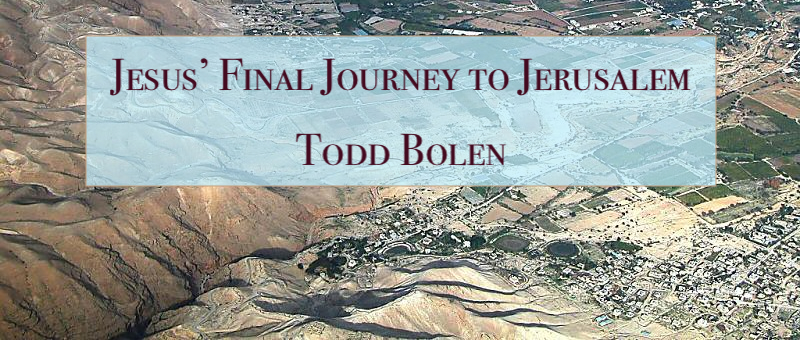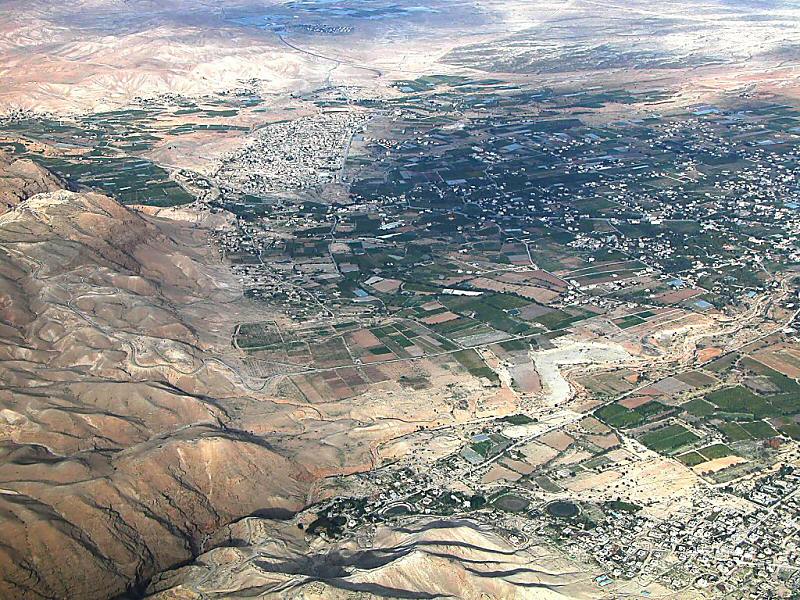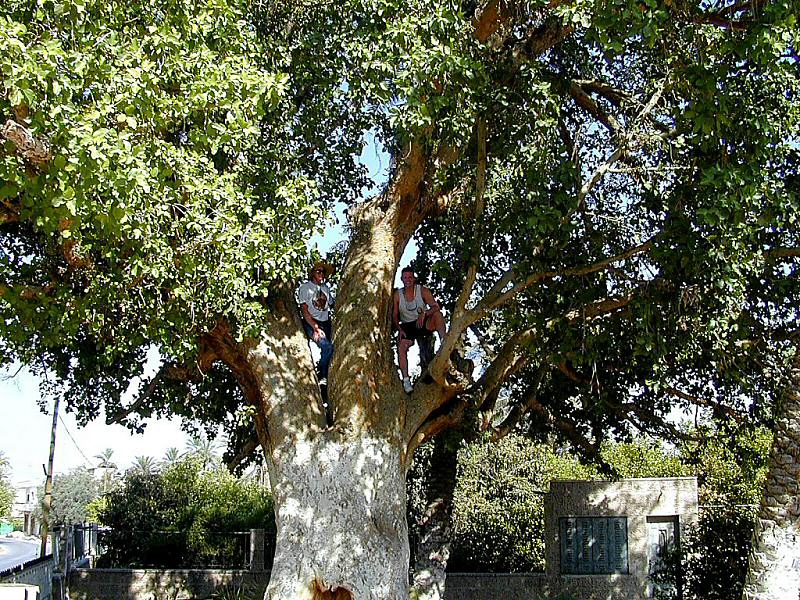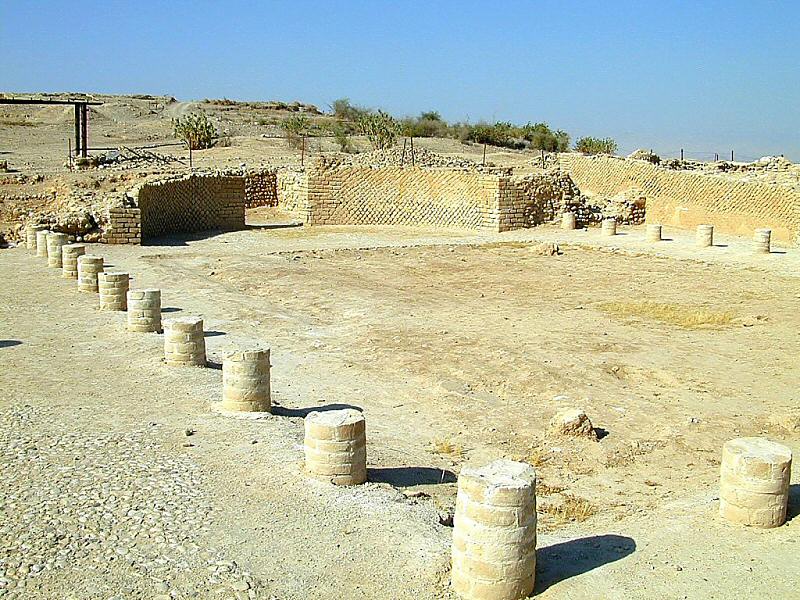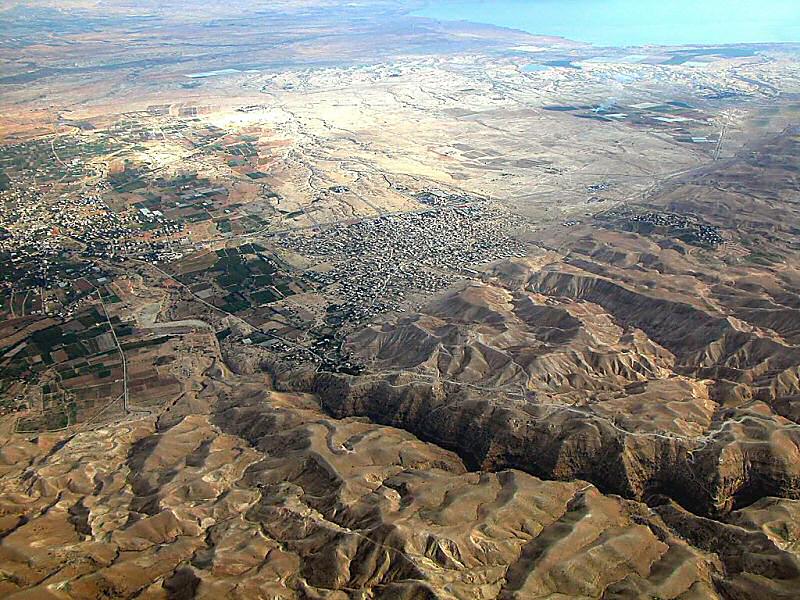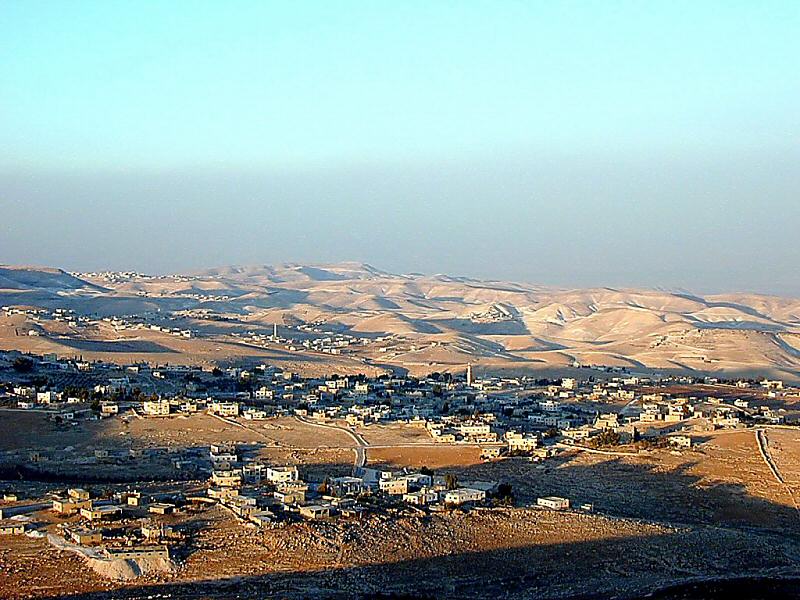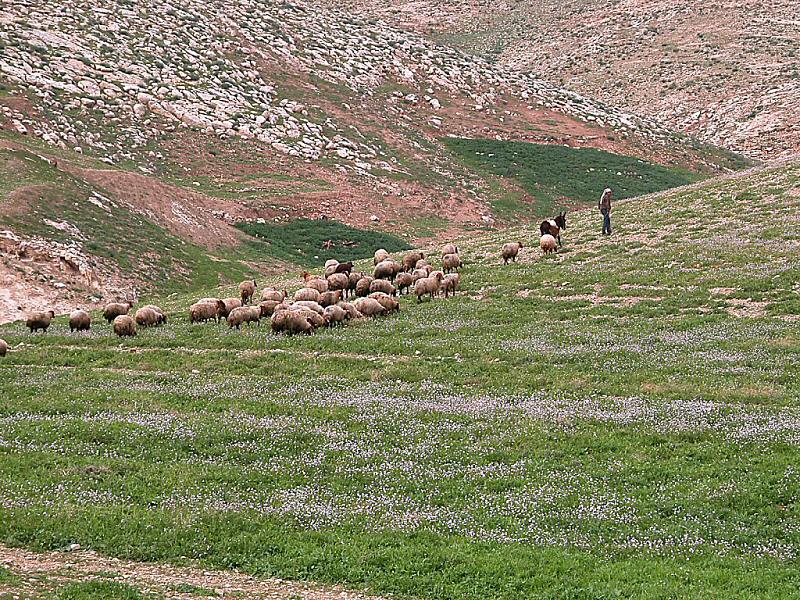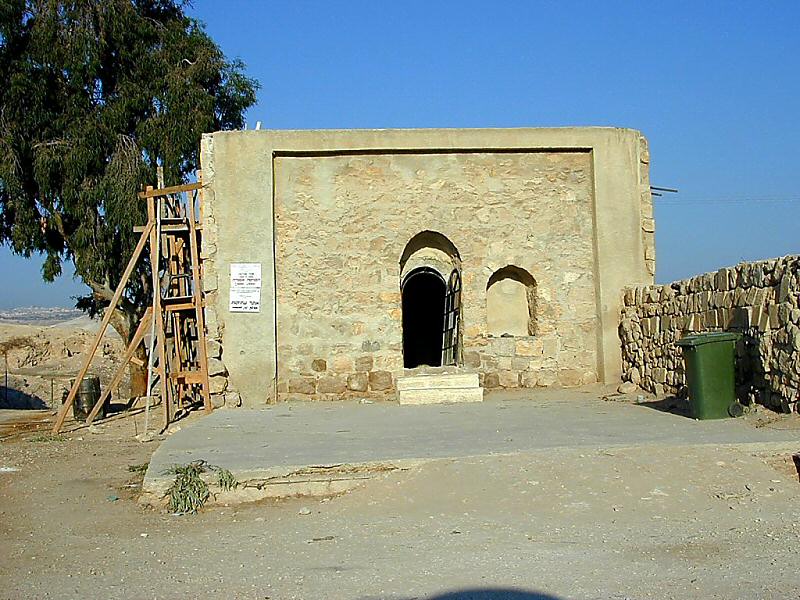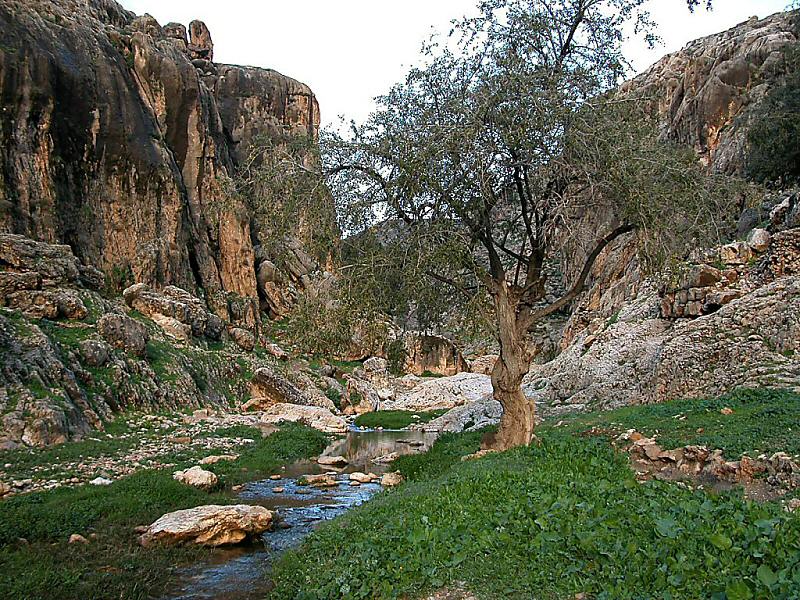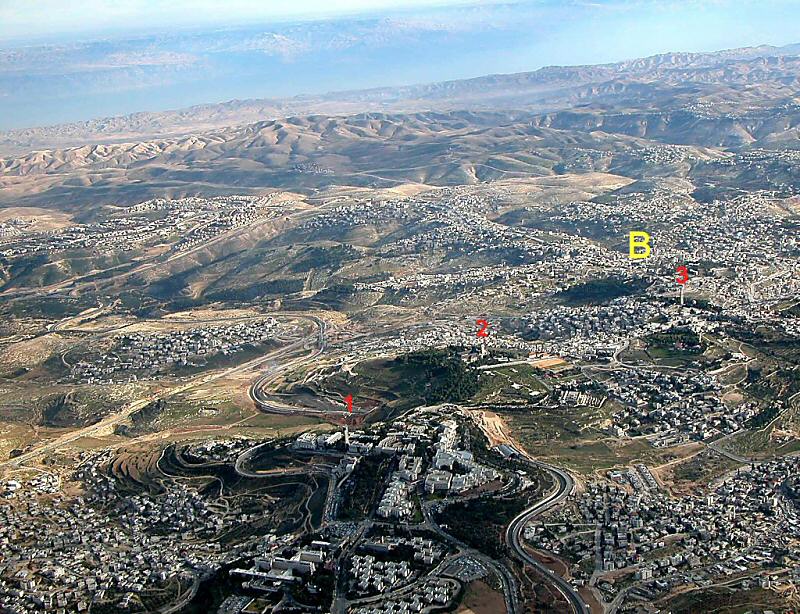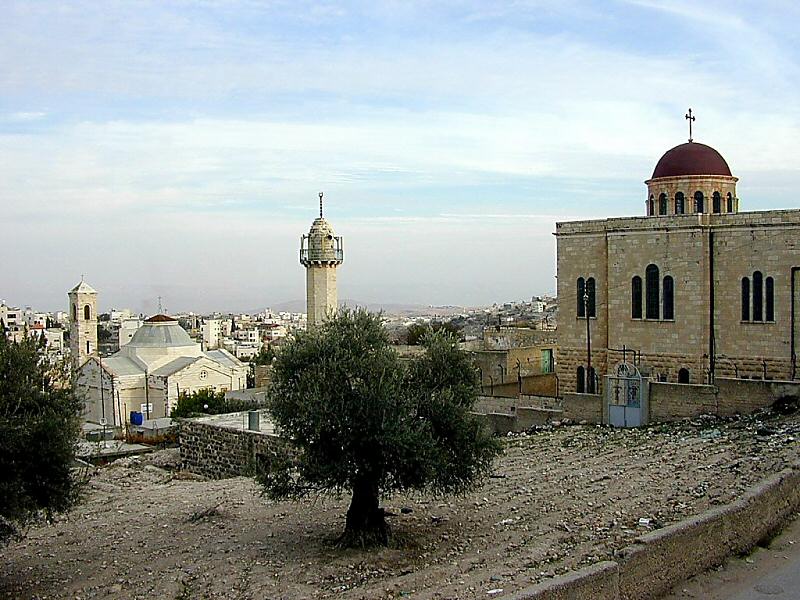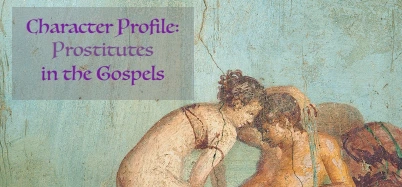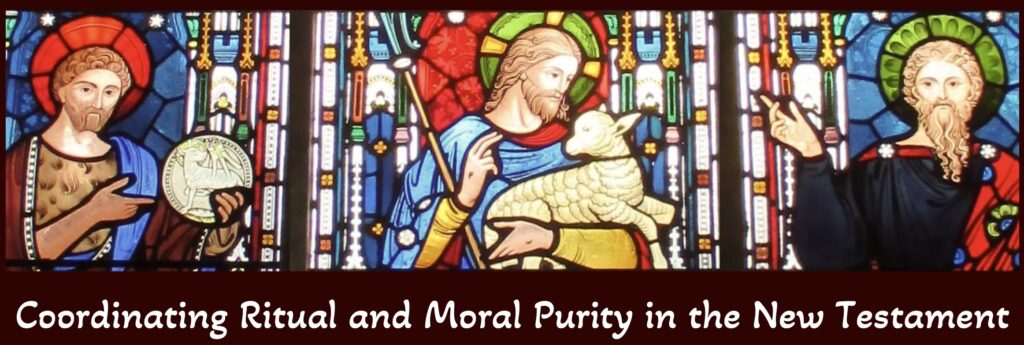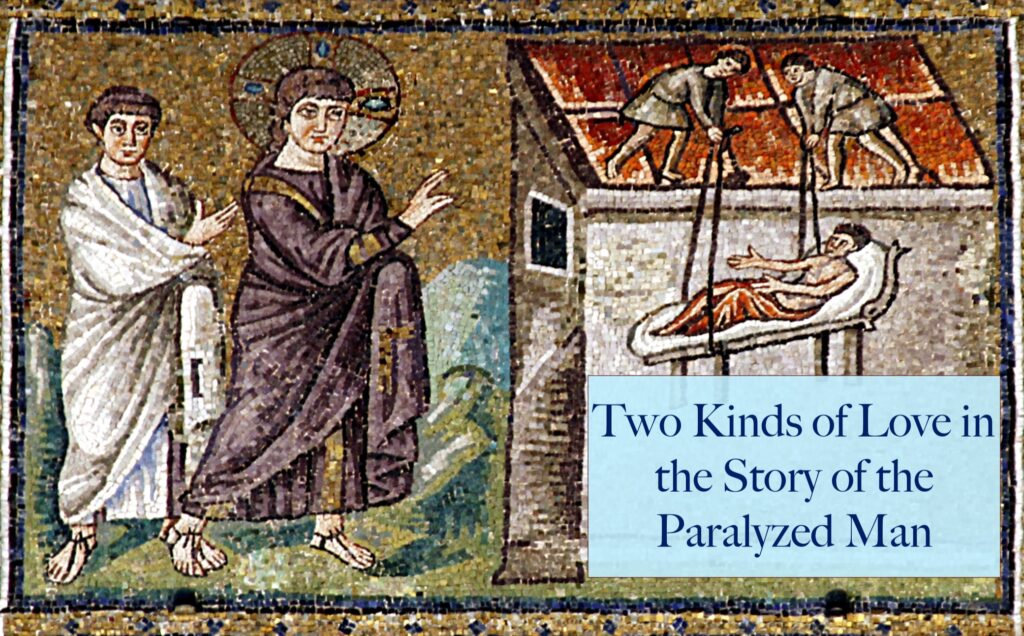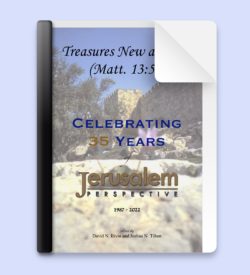Revised: 2 December 2015
Jesus’ arrival in Jerusalem for the events collectively referred to as the “Passion Week” was well planned. For some time he had been “on his way to Jerusalem” (cf. Luke 9:51; 17:11), and in his final approach he passed through Jericho. This oasis city had been in existence already for thousands of years, and its location astride the route to Jerusalem brought many travelers.
Jericho Area From the South
The blind man Bartimaeus probably benefited from the generosity of many pilgrims who were en route to celebrate the feasts at the Temple (Luke 18:35-43). Not satisfied with this, Bartimaeus pleaded with the “Son of David” to restore his sight. In healing him, Jesus praised this blind man for his eyes of faith, which though not seeing, believed.
Sycamore-fig tree in Jericho
Continuing into Jericho, Jesus and the disciples passed a sycamore-fig tree. This hardy tree is evergreen, but its fruit is not as desirable as the true fig. Reaching heights of up to 60 feet (20 m.), one short tax collector found a perch in it to see the Messiah (Luke 19:1-10). Jesus saw Zacchaeus in the tree and invited himself to the man’s house. Though “on his way to Jerusalem,” Jesus made time to bring healing to a second inhabitant of Jericho, and before he departed he noted that “salvation had come to this house.”
To learn more about tree varieties mentioned in the Gospels, check out this Jerusalem Perspective article: Joshua N. Tilton, “‘Look at…all the trees’: Trees in the New Testament Gospels,” Jerusalem Perspective (2024) [https://www.jerusalemperspective.com/28823/]—JP
Herod’s palace in Jericho
The road to Jerusalem leads past the site of a series of palaces along the banks of the Wadi Qilt. Built first by the Hasmonean kings, these palaces were later enlarged and rebuilt by Herod the Great. At 800 feet (250 m.) below sea level, the Jericho area is warm in the winter, making it Herod’s favorite retreat in the colder months. Shortly after ordering the slaughter of babies in Bethlehem, Herod died here. At its peak, the complex included multiple wings spanning both sides of the Wadi Qilt, a sunken garden, large swimming pools, bathhouses, and beautifully decorated reception halls.
The Ascent of Adumim
From Herod’s palace, the road begins a quick and difficult ascent into the Judean wilderness. Known biblically as the “Ascent of Adumim,” this road travels on the southern side of the Wadi Qilt (Josh. 15:7). In the photo, the Wadi Qilt is the deep gorge running diagonally from the lower right corner and the Ascent of Adumim can be seen just above it. Herod’s palaces are located where the Wadi Qilt enters the Jordan Valley, and the Dead Sea is 6 miles (10 km.) south. The root of “Adumim” means “red,” and the plural may be translated as “red places.” The name most likely comes from the red earth that appears along the route.
The Judean Wilderness
The journey from Jericho to Jerusalem is an arduous trip of 18 miles (29 km.). From an elevation of 800 feet (250 m.) below sea level to the summit of the Mount of Olives at 3,000 feet (940 m.) above sea level, Jesus and the other pilgrims would have climbed nearly 4,000 feet (1,250 m.) in the day’s journey. Furthermore, the terrain of the Judean Wilderness is dry, rugged, and with few sources of water. This un-populated region provided seclusion and refuge for those like Jesus’ forerunner, John the Baptist.
Shepherd with Flock in Wilderness
Following the winter rains, this same wilderness is full of life. The normally barren hills sprout green grass and colorful flowers. Shepherds are quick to take advantage of the conditions and graze their flocks. The “Son of David” certainly would have recalled his forefather who once tended his sheep in this area. In his teaching Jesus referenced the temporary nature of such grass (Luke 12:28), and his disciple Peter would later recall Isaiah’s words, “All men are like grass, and all their glory is like the flowers of the field; the grass withers and the flowers fall, but the word of the Lord stands forever” (1 Pet. 1:24- 25). The haste with which the grass withers can be seen in a few days in the wilderness.
Inn of the Good Samaritan
Further along the road to Jerusalem is the traditional “Inn of the Good Samaritan.” Jesus had given the parable of the man who “was going down from Jerusalem to Jericho and fell among thieves” (Luke 10:30). The traditional inn is much later than the time of Jesus, but certainly the disciples and pilgrims were familiar with the potentially dangerous conditions of this route. Travel in groups provided not only companionship but protection. As Jesus approached Jerusalem this time, it was in anticipation of the feast of Passover, and the pilgrim throngs along the way were apparently treated to more parables from the master-teacher (cf. Luke 19:11ff.).
Perath (Farah) Spring in Wadi Qilt
One of the springs not far off the route to Jerusalem is the Perath spring. This abundant source of water supplied many thirsty travelers in antiquity. The LORD once sent Jeremiah to this spring as one of his object lessons (Jer. 13). Hiding his loincloth in a crevice, Jeremiah returned sometime later to find it completely ruined. In the same way, the LORD intended to bring to ruin the pride of the people of Judah and Jerusalem. A few centuries later, Jesus would weep for those descendants of Jeremiah’s hearers who too rejected the plan of God for them.
Mount of Olives, Judean Wilderness and Dead Sea—Looking Southeast.
The final ascent to Jerusalem is over the Mount of Olives. The three peaks of the two-mile-long ridge are dominated by towers today (marked 1, 2, 3 on photo). Jesus would have deviated from the main route just before reaching his destination in Bethany (marked B). In the distance are the Judean Wilderness and the Dead Sea, both natural barriers to traffic from the east. Because of the isolation, Herod the Great built two strong fortresses in this area. Closer to Jerusalem he constructed the Herodium, and along the western shore of the Dead Sea he fortified Masada.
Location of Bethany
The ancient village of Bethany is today known as el-Azarieh, preserving the name of Lazarus, brother of Mary and Martha. Jesus stopped short of Jerusalem to spend the night and enjoy a feast with his friends (John 12; Mark 14). The site is today commemorated by two churches (Roman Catholic – left; Greek Orthodox – right) with the traditional tomb of Lazarus in between (cf. John 11). On the following day when Jesus headed into Jerusalem, he stopped at Bethphage to mount a colt before riding in to the acclamations of the crowd.
Photographs courtesy of BiblePlaces.com. Click on this link to view some of the thousands of high-resolution images by Todd Bolen available in “The Pictorial Library of Bible Lands” collection.
Check out these recent JP articles:
- Character Profile: Prostitutes in the GospelsWas first-century Jerusalem really crawling with prostitutes, as Jesus’ saying about tax collectors and harlots entering the Kingdom of God seems to suggest?
- Purity Halakha in the Story of the Hemorrhaging WomanDoes concern for ritual purity explain why the hemorrhaging woman touched Jesus’ tzitzit?
- Coordinating Ritual and Moral Purity in the New TestamentTaking another look at how John the Baptist, Jesus, and the Apostle Paul related to issues of ritual and moral purity.
- Two Kinds of Love in the Story of the Paralyzed ManTwo kinds of love operate in the story of the paralyzed man. One kind of love is inclusive and redemptive, the other is exclusive and destructive. Which kind of love will prove victorious?
- Character Profile: BeelzebulGet acquainted with this mysterious and sinister figure.
- What’s Wrong with Contagious Purity? Debunking the Myth that Jesus Never Became Ritually ImpureThe view that Jesus could not be affected by impurity and that Jesus was able to spread his purity to others is based on faulty assumptions and invalid inferences.
And check out these items from the JP Bookstore:
-
Sale!
Treasures New and Old (Matt. 13:52): Celebrating 35 Years of Jerusalem Perspective
Original price was: $24.95.$19.95Current price is: $19.95. Add to cart

